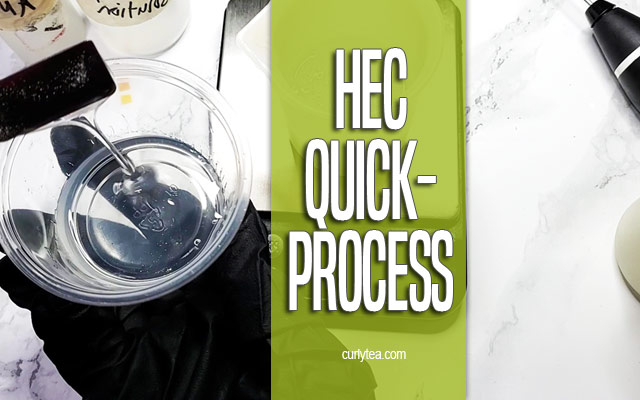
Hey curlyteas! Today I’m going to show you how to use a little shortcut to make it possible to use hydroxyethylcellulose (HEC) immediately in your formulating process!
For my impatient curlies who are skimming, here’s the short version: increase, then decrease the pH. For subbies who want the full details of how to do this, keep reading!
I must have overlooked this tip about HEC repeatedly because I didn’t notice any simple, free advice saying “do this if you want to use HEC immediately…”. It can take 25 minutes to an hour (or so) to hydrate depending on the type of HEC you have.
This was annoying for me because when I’m ready to make formulas, I’m ready to go forward and see what the results will be! My workaround was to make a 1% or 2% HEC solution the night before and add it at a certain percentage to a formula I’m testing.
However, because of this I’ve skipped using hydroxyethylcellulose and chosen to use other polymers like Xanthan Gum CLEAR, or one of the Acrylates/C10-30 Alkyl Acrylate Crosspolymer versions instead.
NOTE: The wait time for Sepimax Zen (at least 8 hours) was always a pet peeve of mine but I got over it quickly because the end result was a full-blown, store quality gel that was more tolerant to electrolytes than plain carbomer (for ex, sodium carbomer). But I digress!
What the HEC is this?
Hydroxyethylcellulose is a non-ionic cellulose based polymer that has many applications. It’s used in cosmetics to create serums, to create slippery gels, and to thicken some cleansing surfactant systems.
The version of HEC I have is important to know because the grade of HEC you have will determine how you use it. The version I have is R-grade HEC, can be poured directly into water without forming clumps.
The “R” designation means it’s been altered to delay it’s hydration, which allows the powder to be added directly into water without needing to be mixed with glycerin or propanediol first. It will have a designation like “250HHR-CS” or “250 HHR “. I think the brand name is Natrosol 250 HEC. I purchased my version from makeyourown.buzz.
You’ll find HEC in everything from conditioners and serums to sheet masks and styling gels. I’ve added 10% of a 2% HEC solution to a fenugreek based hair gel and made the best gel I’ve made thus far (as far as performance and feel goes).
Fenugreek Herbal Curl Gel
https://www.curlytea.com/0827/fenugreek-herbal-curl-gel-msm.html
HEC has a thick, syrupy like consistency with tons and tons of slip. The “slip” is similar to guar gum. But HEC’s performance is much better because it doesn’t easily flake up on the hair or “pill” (“ball up”) on the skin during rub-in.
Because of it’s nonionic nature, Hydroxyethylcellulose is compatible with so many more ingredients than some of the other workhorse ingredients we know. For example, Xanthan gurm is extremely versatile but it’s anionic. That means it can’t be used with cationic ingredients like our beloved BTMS.
How the HEC do I use it right away?
HEC is especially sensitive to two things: pH and temperature. Unfortunately, when I read this information online, I saw it as a precaution, not as a tip. What it means is that you can DECREASE the amount of time it takes to form a gel by INCREASING pH and/or temperature.
There’s an inverse relationship between hydration time and pH, or a direct relationship between viscosity and pH.
In other words, to DECREASE the hydration time, you can INCREASE the pH. (inverse)
Another way to say this is, in the short term, to INCREASE the viscosity, you can INCREASE the pH. (direct)
I have not tested how increasing the temperature decreases the hydration time. Since heating also takes time and forces you to have to worry about temperature, I’m solely focused on the cold-process method trick.
What the HEC do you mean? What’s the process?
The process itself is simple as long as you have the right version of HEC. Remember, the “R” grade version can go directly into water. You don’t have to worry about having the right stirring equipment or having the right solvent.
It’s important to note that a 1% HEC mix will not look like a jiggly gel. It won’t look like Eco Styler or Wetline. It will look more like a syrup. So if you see a super slippery serum or syrupy viscosity, you’re on the right path.
Below are the steps I used for the 50 gram version including a pH friendly preservative and polysorbate 20 to keep the gel as clear as possible.
Whether you are a subscriber or not, you should see the video. HOWEVER, the full write up is for Subscribers. If you’re not a member, you will see some blank pace below. Subscribers can see all of the information including a test formula for version 7 of an Azelaic and Niacinamide Serum I’m currently using which contains the 1% HEC solution as well!
So become a Subscriber today!
(Video posted to ODYSEE first)
✍(◔◡◔)
—
—
Continue…
Non-subbies, welcome back!
- Create a 50/50 Citric acid solution that contains 50% citric acid, 50% distilled water. You can do 25 grams citric acid and 25 grams distilled water. Or 10 grams citric acid and 10 grams water. Just make the amounts even. Stir it well and it’s ready to go.
- Add 2-3 drops of this 50/50 Citric Acid solution into the Batch
- Use a frother or other mechanical mixer to mix the 50/50 Citric Acid solution for about 30 sec – 2 minutes
- Test the pH. It should be around 4.5 – 5 That’s it. Now you can go forth with your formulation.
You can also try to add the preservative+polysorbate 20 AFTER you raise and lower the pH. I wanted to make sure they would be integrated instead of hoping to integrate a preservative+polysorbate20 into a gel.
If you choose to add the preservative+polysorbate 20 AFTER the raising and lowering of the pH, you can use whichever preservative that works best for you.
I wanted a 1% HEC solution as part of the ingredient list in another formula. To process HEC itself as an ingredient in your full formula, follow the steps but use your chosen percentage of HEC to quick-process it at the very beginning before you add anything else to the water.
Remember, you’ll have to raise the pH high, let it thicken, then bring it back down. Some ingredients in your formula won’t like that at all. Please do this HEC quick-process method before you add anything else besides a preservative that also works at a sky high pH and Polysorbate 20.
Once you begin formulating directly with HEC in your formula (instead of making a 1% or 2% HEC solution), you can skip the preservative at the early stages.
Anyway, thanks for reading and I hope I’ve explained it well enough for you guys who, like me, loves the feel of HEC but have shied away from it because it seems to take half an hour or longer to hydrate.
Happy DIYing!
 CURLYTEA
CURLYTEA



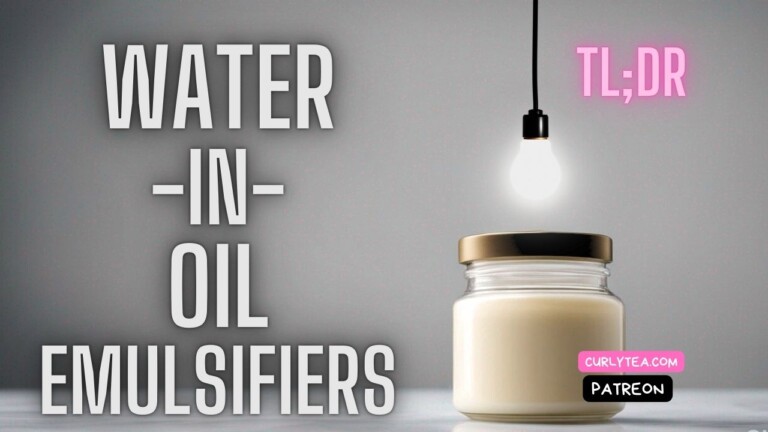
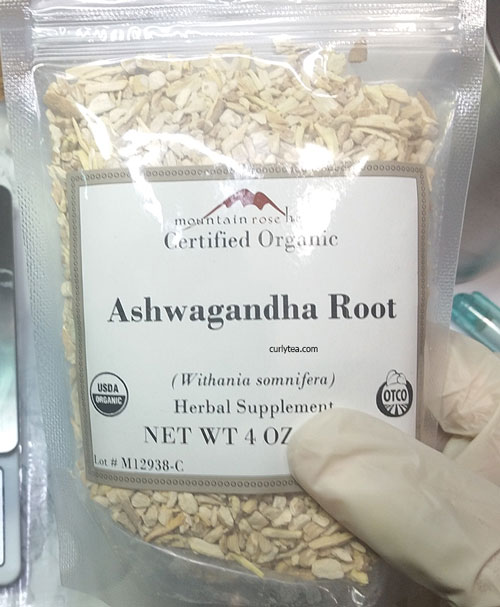
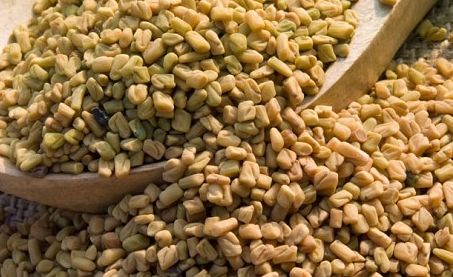
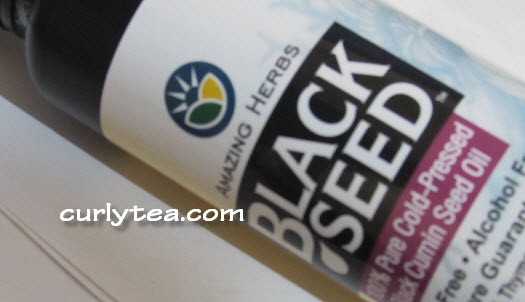
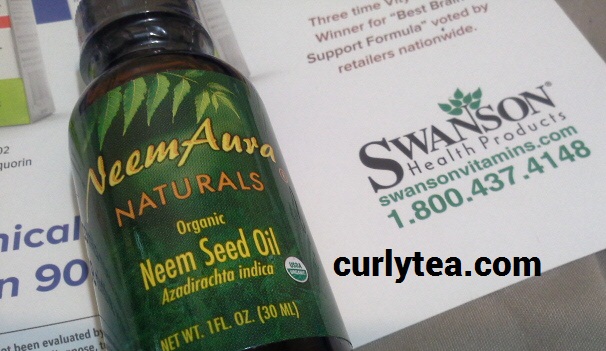
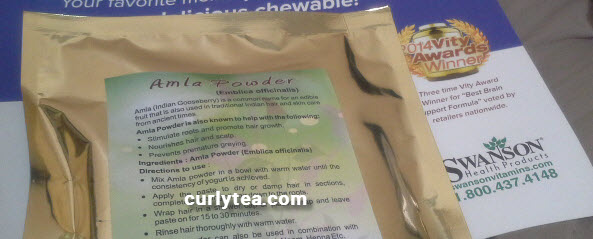

Can we use Triethanolamine instead of Aminomethyl propanol?
Triethanolamine and Aminomethyl propanol both work similarly. However, I think you’ll have to give triethanolamine (TEA) a minute or so of stirring before you’ll see the difference. Aminomethyl propanol works almost instantly. TEA may take a little longer. Add 1 drop and stir for about 30 seconds – 1 minute. If it’s still not thick, add another drop and stir well.